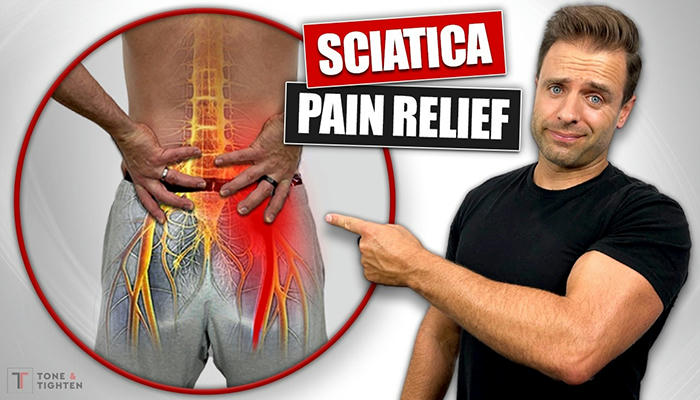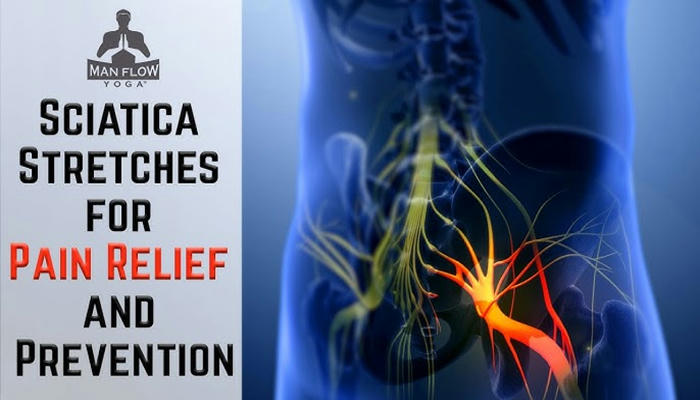Understanding Sciatica: Symptoms, Causes, and Effective Treatments
Sciatica is a common condition characterized by pain that radiates along the sciatic nerve, which runs from the lower back down the back of each leg. This condition can cause significant discomfort, disrupt daily activities, and impact overall quality of life. Recognizing the symptoms, understanding the causes, and exploring effective treatments are essential steps toward managing sciatica and regaining control of your health.

What is Sciatica?
Sciatica occurs when the sciatic nerve—the longest nerve in the body—becomes compressed or irritated. This can result in pain, numbness, tingling, or weakness that typically affects one side of the body. While sciatica is often linked to issues in the lower back, such as herniated discs or spinal stenosis, it can also arise from other factors like muscle spasms or injuries.
Common Symptoms of Sciatica
Sciatica manifests in various ways, and its symptoms can range from mild to severe. Here are the most common signs to watch for:
Radiating Pain:
The hallmark symptom of sciatica is pain that starts in the lower back or buttocks and travels down the back of the leg.
The pain may feel sharp, burning, or electric-like and can worsen with movement, coughing, or sneezing.
Numbness and Tingling:
Many people experience a pins-and-needles sensation or numbness in the affected leg or foot.
Muscle Weakness:
Weakness in the leg or foot can make it difficult to walk, stand, or perform daily activities.
Aggravating Factors:
Prolonged sitting, standing, or sudden movements can intensify the pain.
Unilateral Symptoms:
Sciatica typically affects one side of the body, causing discomfort in one leg rather than both.
What Causes Sciatica?

Several conditions can lead to sciatic nerve compression or irritation. Understanding the root cause is crucial for effective treatment:
Herniated or Slipped Discs:
A herniated disc in the lower spine can press on the sciatic nerve, causing pain and other symptoms.
Spinal Stenosis:
Narrowing of the spinal canal can compress the nerves, leading to sciatica.
Piriformis Syndrome:
The piriformis muscle in the buttocks can spasm or become inflamed, irritating the sciatic nerve.
Degenerative Disc Disease:
Age-related wear and tear on the spinal discs can contribute to nerve compression.
Injuries or Trauma:
Accidents or falls can damage the spine or surrounding tissues, triggering sciatica.
Pregnancy:
The growing uterus can put pressure on the sciatic nerve, especially during the later stages of pregnancy.

Effective Treatments for Sciatica
The good news is that sciatica is often treatable with a combination of therapies. Here are some of the most effective approaches:
Medications:
Over-the-counter pain relievers like ibuprofen or aspirin can reduce inflammation and alleviate pain.
For severe cases, doctors may prescribe muscle relaxants or stronger pain medications.
Physical Therapy:
Stretching and strengthening exercises can improve flexibility, reduce pressure on the nerve, and prevent future episodes.
Techniques like heat therapy, ice packs, and ultrasound can also provide relief.
Exercise and Movement:
Low-impact activities like yoga, swimming, or walking can strengthen the back and core muscles, supporting the spine and reducing nerve compression.
Alternative Therapies:
Acupuncture, massage, and chiropractic adjustments may help relieve pain and improve mobility.
Lifestyle Adjustments:
Maintaining a healthy weight, improving posture, and avoiding prolonged sitting can reduce strain on the lower back.
Surgical Options:
In severe cases, surgery may be necessary to address the underlying cause, such as removing a herniated disc or widening the spinal canal.
Preventing Sciatica
While sciatica can’t always be prevented, these steps can reduce your risk:
Stay Active:
Regular exercise strengthens the muscles that support your spine and improves flexibility.
Practice Good Posture:
Whether sitting, standing, or lifting objects, proper posture reduces strain on your lower back.
Maintain a Healthy Weight:
Excess weight can put pressure on the spine and increase the risk of nerve compression.
Take Breaks:
If you have a sedentary job, take frequent breaks to stretch and move around.
Lift Properly:
Use your legs, not your back, when lifting heavy objects to avoid injury.
When to Seek Medical Help
If you experience persistent or worsening symptoms, such as severe pain, muscle weakness, or loss of bladder or bowel control, seek medical attention immediately. These could indicate a more serious condition requiring prompt treatment.
Conclusion: Take Control of Your Sciatica
Sciatica can be a challenging condition, but with the right knowledge and approach, it’s manageable. By recognizing the symptoms, understanding the causes, and exploring effective treatments, you can take proactive steps to alleviate pain and improve your quality of life.
Remember, early intervention is key. If you suspect you have sciatica, don’t hesitate to consult a healthcare professional. With the right care and lifestyle adjustments, you can overcome sciatica and get back to living your best life.
Final Thought: Sciatica doesn’t have to control your life. By staying informed, seeking timely treatment, and making healthy choices, you can reduce pain, regain mobility, and enjoy a more active, fulfilling lifestyle. Start your journey to recovery today!
